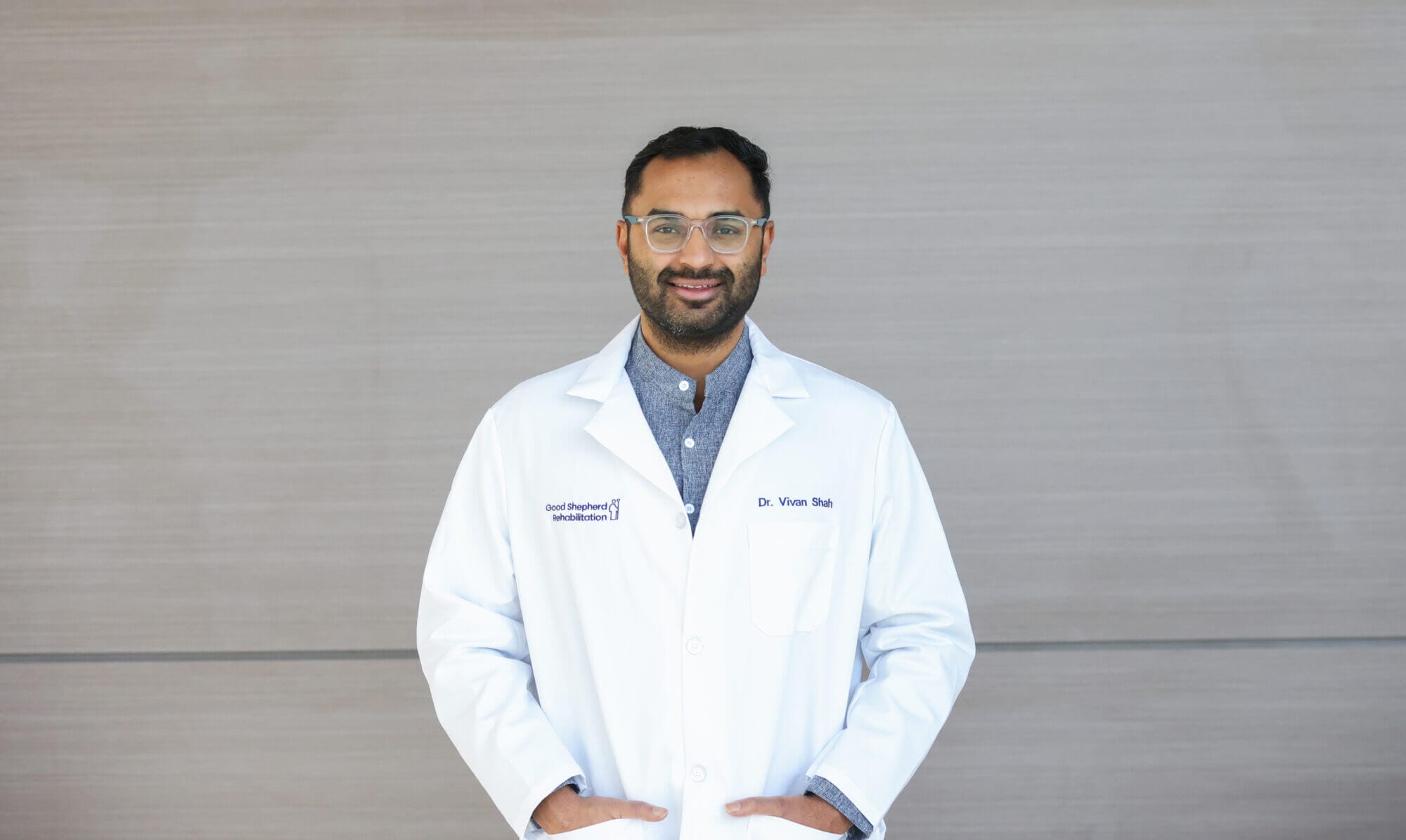Why Choose Us
Learn more about Good Shepherd Rehabilitation Hospital, a destination for recovery for stroke, brain injury, spinal cord injury and complex medical rehabilitation.

Interventional spine care offers targeted, minimally invasive solutions for back and neck pain. Using radiological imaging and precise techniques, interventional spine specialists can diagnose and treat the root causes of pain.
Good Shepherd Rehabilitation’s interventional spine specialist is Vivan Shah, MD, an outpatient physical medicine and rehabilitation (PM&R) physician (or physiatrist) who completed an Interventional Spine and Musculoskeletal Medicine Fellowship at OSS Health in York, Pa.
We asked Dr. Shah, whose practice focuses on pain management, to explain interventional spine care and the services he provides to patients.
Dr. Shah: Interventional spine care utilizes advanced imaging with ultrasound and X-rays to guide procedures like nerve blocks and epidural injections and radio frequency ablation.
These precision treatments allow me to provide personalized, effective spine care that often bring fast relief so that patients can return to their daily lives with more mobility and less discomfort.
Dr. Shah: In the outpatient setting, I care for patients who have chronic back and neck pain. I treat patients with pain in the cervical (neck) spine, facet joints in the spine, lumbar (back) spine, tail bone and SI joints (low back), sciatic nerve pain and neuropathy issues.
A patient’s pain may be the result of an injury, disc herniation, bone slippage or mild to severe arthritis.
“Once I know the main source of pain, a care plan is created to target that spot.”
Vivan Shah, MD
Dr. Shah: Patients often have multiple health issues, so I act as a detective to identify the specific structures in the spine, such as joints, discs and nerves, that are the root cause of pain.
The first step is a thorough evaluation of each patient to figure out the biggest contributor to pain and mobility limitations.
I conduct a physical evaluation, review the patient’s history and often prescribe imaging, such as an ultrasound or X-ray. Electrodiagnostic testing — nerve conduction and EMG studies — can be used to measure nerve and muscle conditions.
Once I know the main source of pain, a care plan is created to target that spot.
Dr. Shah: A comprehensive patient care plan may start with physical and occupational therapy, medication, bracing, orthotics and ergonomic adjustments.
If these treatments are unsuccessful or the pain is debilitating, imaging-guided injections may be recommended.
At Good Shepherd, we offer these minimally invasive spine injections:
Good Shepherd also offers radiofrequency ablation — a minimally invasive procedure that uses heat generated by radiofrequency energy to temporarily disrupt specific spinal nerves responsible for transmitting chronic pain signals, particularly from the facet joints.
Dr. Shah: During medical school, I took a year off to explore different parts of medicine. I worked with PM&R physicians in Rutgers, New Jersey, who were pain and interventional spine specialists. They extensively used diagnostic ultrasound in their practice, which led me to appreciate ultrasound as a diagnostic tool and gave me direction for the type of medicine I wanted to practice.
After completing residency in PM&R, I then completed an Interventional Spine and Musculoskeletal Medicine Fellowship at one of the country’s top programs.
At Good Shepherd, I am executing my vision of practicing interventional spine care and pain management and improving the quality of life for my patients.
To request an appointment with Dr. Shah or learn more about his interventional spine expertise, call 610.776.3278.